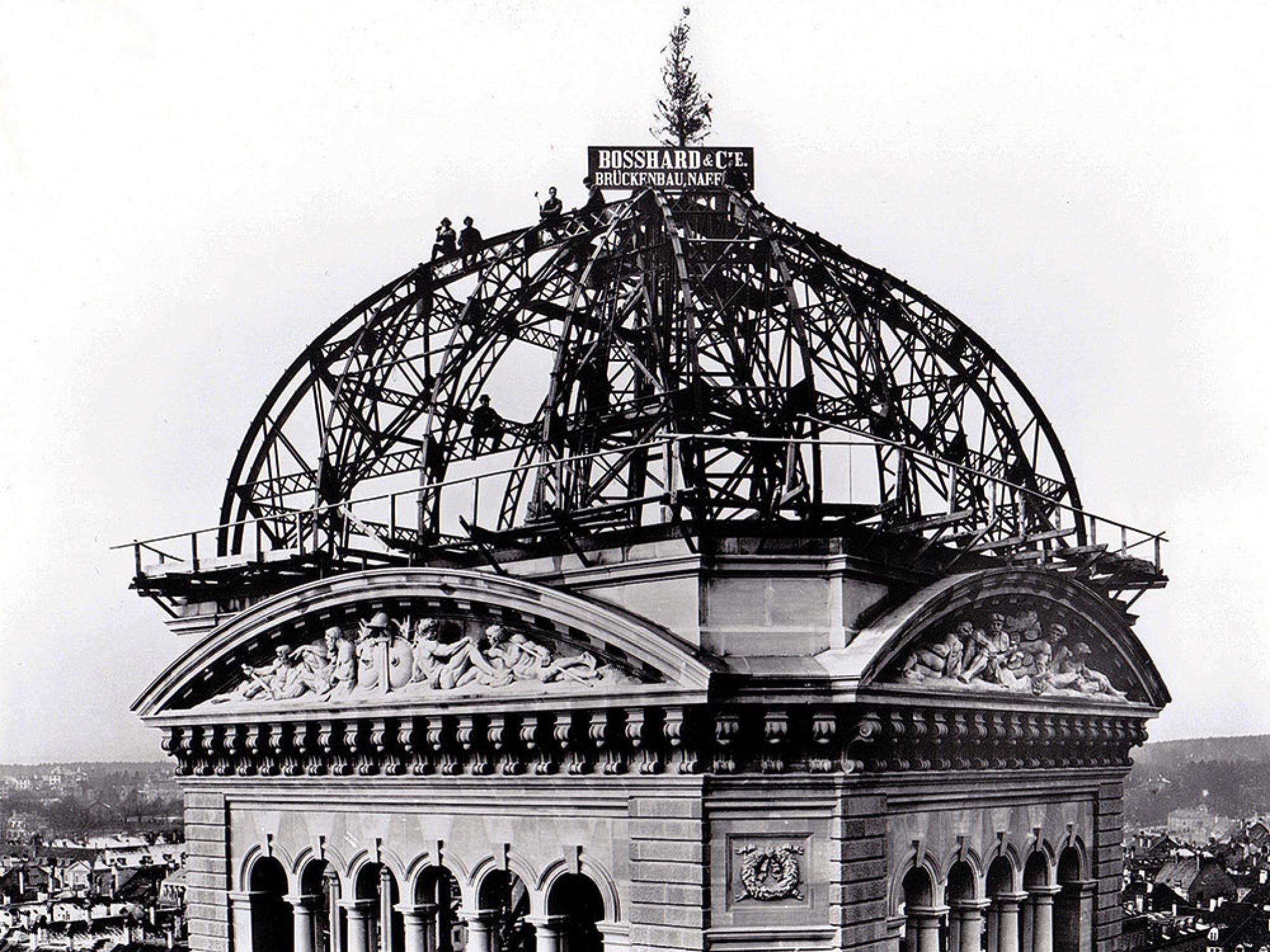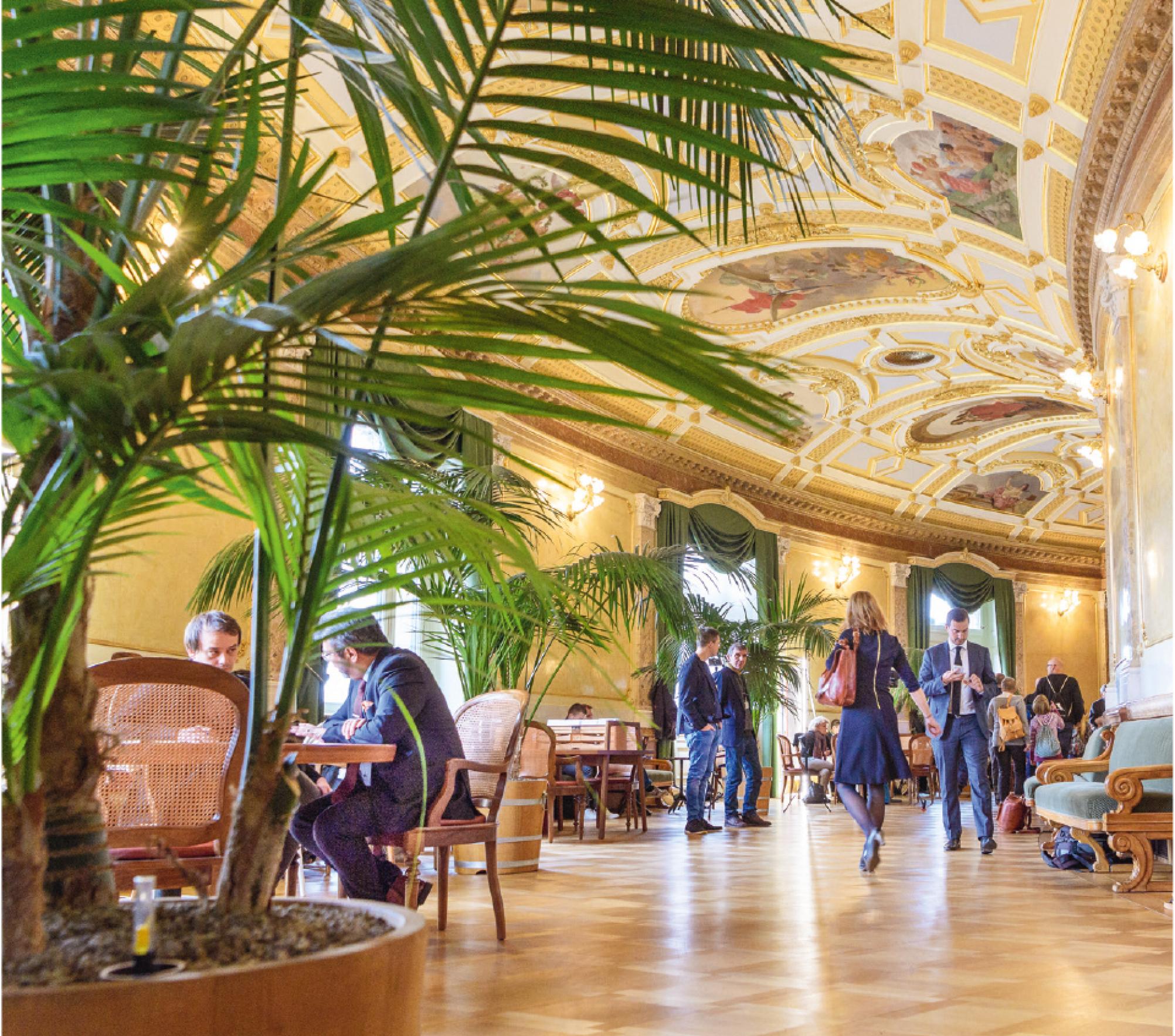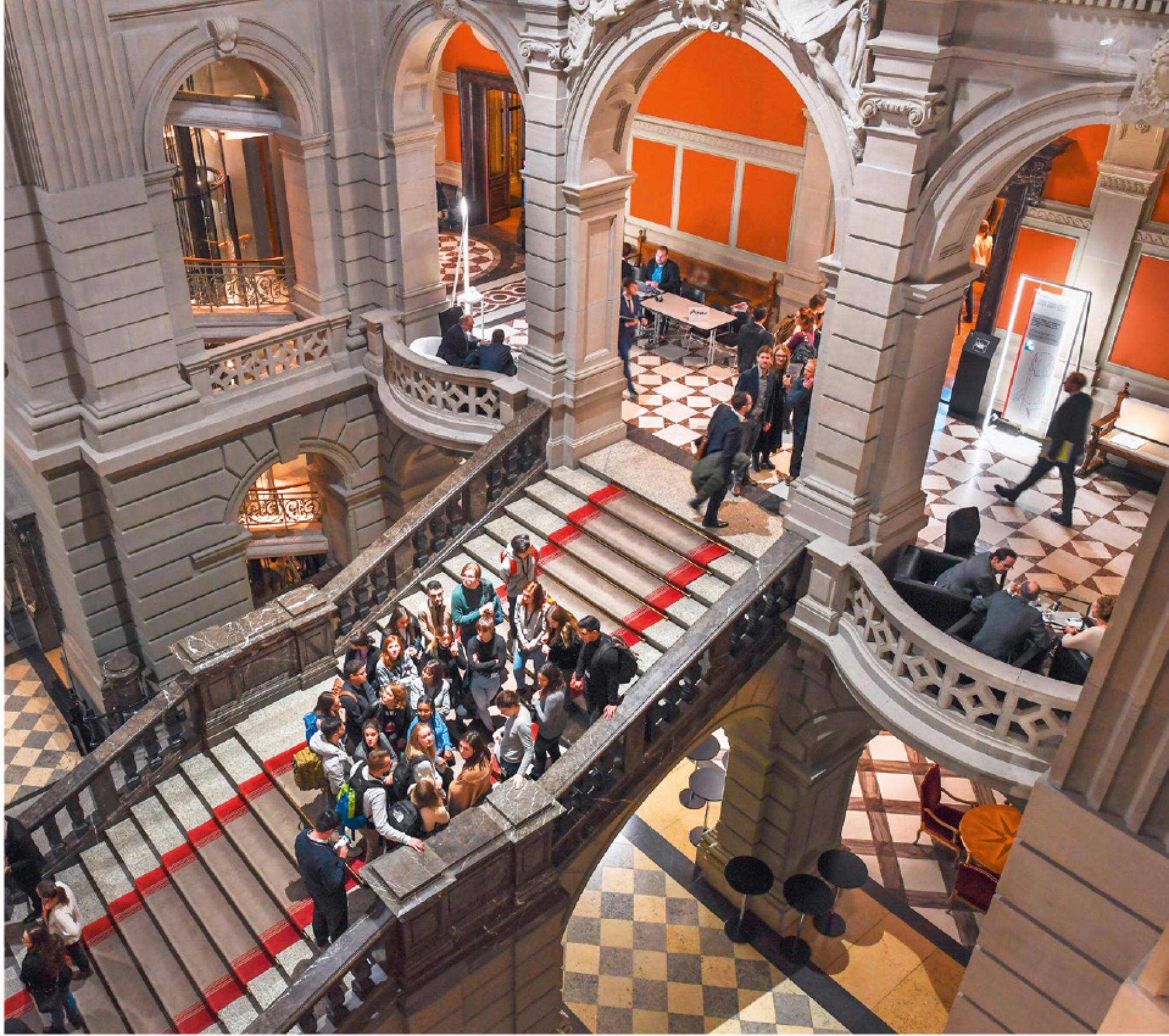THE PARLIAMENT BUILDING
Construction in stages
The Federal Palace, the seat of the Swiss parliament and government, is regarded as one of the most historically important buildings in Switzerland. It comprises three elements which are linked by raised covered walkways: the West Wing, the Parliament Building and the East Wing. In contrast to most other countries with a bicameral system, both chambers are housed under the same roof.
On 28 November 1848, the Federal Assembly, in a first round of voting, chose Bern to be the capital city and therefore the seat of the federal authorities. As there were no suitable existing buildings in Bern to house the government, Parliament and the Federal Administration, provisional solutions at first had to be found. The Erlacherhof on Junkerngasse was made available to the Federal Council, the National Council met in the ‘Casino’ music hall, built in 1821, and occasionally in Bern’s city hall, while the Council of States met in the town hall ‘zum Äusseren Stand’ on Zeughausgasse. The Federal Supreme Court and the various branches of the Administration took up residence in various buildings in the old town.
In February 1849, the city authorities were commissioned with the task of finding an appropriate location for a central building with sufficient space to house both chambers of Parliament, rooms for the Federal Council, 96 offices and an apartment for the Federal Chancellor. The site chosen by the Federal Council from a number of proposals was that of the town’s timber works next to the casino. On 8 April 1850, the city council launched a tender for designs for the ‘Bundes-Rathaus’ on the southern side of the old town on the edge of the escarpment above the River Aare.
Work on the construction of what is now the West Wing began in 1852 and was to house both chambers of parliament. The official inauguration took place a little over five years later on 5 June 1857. It was later joined by the mirror image East Wing in 1884.
 Dome under construction in 1900, inauguration of the new Federal Palace on 1 April 1902
Dome under construction in 1900, inauguration of the new Federal Palace on 1 April 1902
The central Parliament Building, built according to plans drawn up by architect Hans Wilhelm Auer between 1894 and 1902, completed the interconnected three-part complex that we see today.
The Parliament Building is a monumental work in the neo-renaissance style with porticos and a prominent dome. The rich artistry and construction materials from all regions of the country underline the character of the building as a national monument and as a ‘Federal palace’.
The architect’s intention in designing the Parliament Building was to replicate, figuratively, the whole of Switzerland. He drew up a plan of pictures and symbolic images covering three broad themes: the nation’s history based on founding myths, the constitutional foundations and general virtues of the state, and Switzerland’s cultural, political, geographic and economic diversity.
Who goes in and out of the Federal Palace
Even in an age of chat rooms, Skype and social media, there is still a need for a place where members of parliament can gather to hold meetings and discussions, as well as have informal chats. The Federal Palace is above all the nation’s meeting place: in addition to the parliamentary sessions held in the two largest chambers, around 2000 meetings a year are held in the many other conference rooms. The Parliament Building also has an important ceremonial and not least a social function: given its architecture it lends itself as a stage for the nation’s political proceedings. Council sessions are public and attract a great deal of public interest. Politicians meet with groups of visitors from their home cantons, and foreign delegations are received in the richly decorated rooms. The lobby and restaurant provide a setting for more informal discussions, and there are also places where council members can sit down to work.
Media
Wherever there are political goings-on, the media are never far behind. For a number of years now there has been a large, modern media centre on Bundesgasse, but camera teams can still be found in the Federal Palace itself most days, looking for politicians to interview.
Lobbyists
Lobbyists representing the interests of associations, businesses or other organisations in Parliament also come and go: each member of parliament is entitled to name two
people who may enter the Parliament Building as guests.
 Parliamentary lobby: meeting place for last-minute consultations
Parliamentary lobby: meeting place for last-minute consultations
 The domed hall: a place of great symbolism
The domed hall: a place of great symbolism